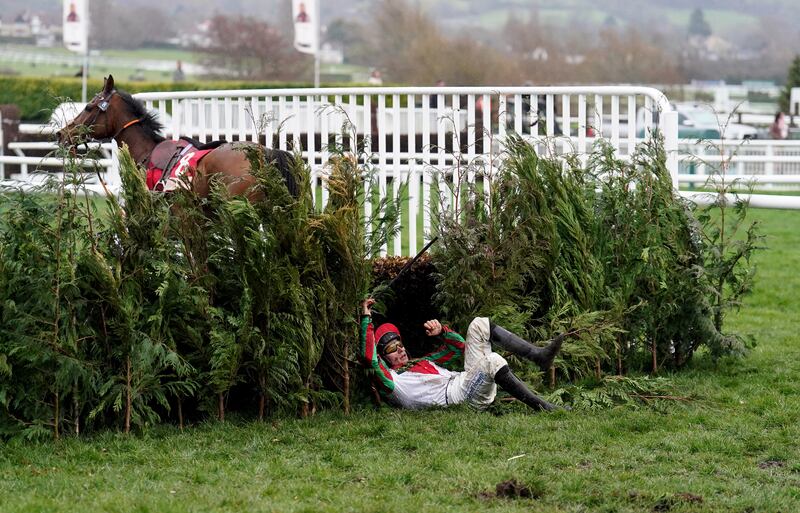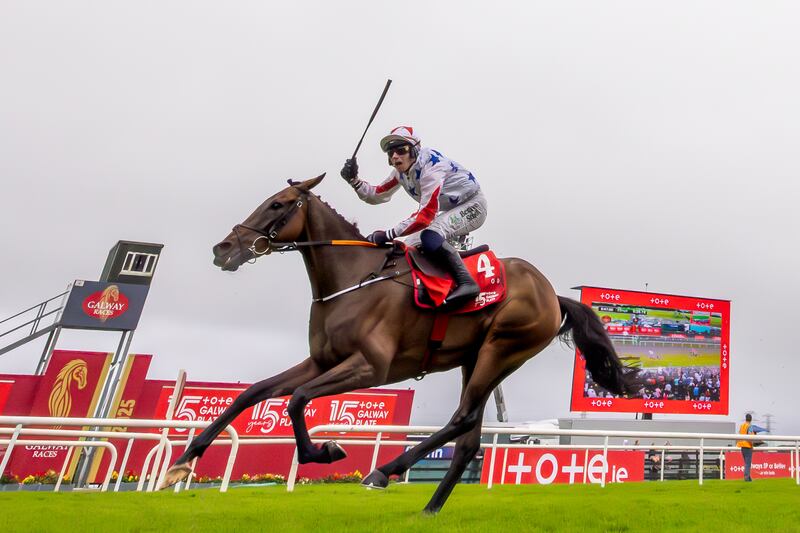For many fans on both sides of the Irish Sea, Cheltenham’s first meeting of the season today signals a start to the jumps campaign proper. To underline the point, Aintree holds its own first fixture on Sunday. With the return of the sport’s most famous tracks comes the double-edged sword that is public attention.
It’s a point underlined by Aintree hitting the headlines after announcing changes to the Grand National. Both the sport’s greatest spectacle and recruiting agent, it has also increasingly become a fraught annual exercise in jump racing having to justify itself as a fair challenge in the face of allegations of cruelty by animal rights groups.
The latest Grand National amendments, including a reduction in the maximum number of runners from 40 to 34, has been presented as an attempt to secure the race’s future by being seen to make every effort to make an inherently hazardous challenge as risk-free as possible. Inevitably, opponents have condemned them as the latest bout of pandering to those who want to prohibit jump racing entirely.
Grand National winning trainer Ted Walsh has warned that not only the Grand National but all jump racing in Britain could be banned within 20 years. It’s a headline-grabbing statement although anyone dismissing it as alarmist hasn’t been paying attention to wider societal trends when it comes to animal sports. The surest of sure things is that pressure on jump racing will only increase.
Ladies’ Day: ‘Get off Tinder – you have to come to the Galway Races’
Ndaawi and Jack Kennedy get dramatic Galway Hurdle in the stewards room after Helvic Dream thrown out
Last year’s runner-up Ndaawi out to go one better in Galway Hurdle
Danny Gilligan wins second Galway Plate in three years as Western Fold powers to Ballybrit glory
Welfare debates intensify around major events at Cheltenham or Aintree. Last year’s Cheltenham festival was marked by four horses being injured fatally. Hill Sixteen, a faller at the first in the Grand National, was one of four deaths at Aintree this year. But the ethical quandary about National Hunt racing is the same at Cartmel or Ayr and is increasingly coming under the spotlight here in Ireland also.
Jump racing’s selling point is thrills and spills. For fans there’s little as stimulating as horses and jockeys jumping obstacles at speed. But spills are inevitable and so is the reality that a small fraction of them result in fatal injuries to horses. Since they are a consequence of what is essentially human entertainment, only the most unimaginative can never have pondered just how edifying that is.
Unfortunate proof that thoroughbreds can get seriously injured without ever leaving the ground occurred this week when last year’s Derby winner Desert Crown had to be euthanised following an injury picked up during a home gallop in August. When dealing with as fragile a creature as a thoroughbred, the potential for injuries is always just a step away.
Racing authorities here cite commercial sensitivities surrounding fatality rates in Ireland. But replying to a Dáil question less than a year ago, Minister for Agriculture Charlie McConalogue said that of 37,262 runners in 2021 there were 113 deaths at racecourses.

British Horseracing Authority statistics show an overall 0.20 per cent fatality rate last year with 169 deaths from 86,419 runners between the flat and jumps. The figures include horses fatally injured as a direct result of their injuries on race day or within 48 hours of race day. Inevitably, the rate is higher in National Hunt racing at 0.41 per cent with 122 fatalities from nearly 30,000 runners in 2022.
It’s a stark bottom line that reflects an exponential increase in danger once horses are asked to jump obstacles at speed. It’s a blunt reality that does mean extreme animal rights groups really won’t be happy until racing is banned — not just the National Hunt sphere — and some bucolic fantasy of rewilded equines roaming free, unsupervised, and uncared for, is somehow magically created.
If there are delusions at either end of the welfare debate, it is the overwhelming public middle ground that will decide if jump racing’s social contract stays intact. So, it is overwhelmingly in racing’s self-interest to adapt to changing social mores by tweaking the demands of its greatest shop window events while also being able to stand over the impossibility of making the sport risk-free.
To that end new steps such as the Irish Horseracing Regulatory Boards’s awkwardly titled Equine Injury in Irish Racing Risk Reduction Project is reflective of greater awareness of the need to reassure majority public opinion that might be ambivalent much of the time but is able to decide for itself if it thinks something is cruel or not.
Today’s return to Cheltenham is a reminder of the grandeur National Hunt racing can produce on its greatest stages. For devoted fans going there can resemble some tweedy pilgrimage. But it does come at a price and that means the sport will come under more and more scrutiny in relation to the cost of providing thrills which by their very nature result in spills.
If more ominous predictions for the future are to be avoided, the risk factor must continue to be regarded as reasonable, no matter what the track is.
Something for the Weekend
Britain’s final Group One of the year could have a potential Ballydoyle-Godolphin head-to-head in Doncaster’s Futurity on Saturday. Diego Velazquez is Aidan O’Brien’s main hope for a twelfth success in a race where the usual testing conditions will apply. That will be new to the Irish colt but not to ANCIENT WISDOM (2.10) who impressed on soft ground in the Autumn Stakes a fortnight ago.
Prior to that, tonight’s Pat Smullen Mercury Stakes is Dundalk’s feature and the five-time course winner THE HIGHWAY RAT (7.00) looks like he’s coming into form at the right time to repeat his 2021 victory in the race. He can’t afford to be slowly away as he was last time when runner up to old rival Harry’s Bar but has a weight swing for being beaten a neck.
















